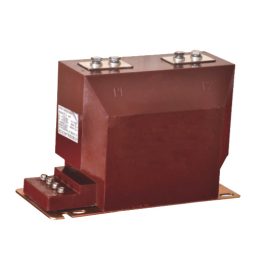Causes of 35KV Current Transformer Damage
In today’s world, electricity is essential in both production and daily life, making the power industry a crucial foundation for economic development. Various power equipment types are essential to ensuring effective power transmission, and the 35KV current transformer (CT) is a common piece of equipment in this process. However, when a 35KV CT malfunctions, it disrupts the smooth functioning of the power system. Understanding the primary causes of damage to 35KV current transformers is vital for maintaining system reliability. Here are some key factors that can lead to their failure.
1. Environmental Factors
Environmental conditions significantly impact the performance and durability of a 35KV current transformer, which is often installed outdoors or in substations. These installations expose the CTs to a range of harsh weather conditions and fluctuating temperatures, humidity, and moisture levels. Extreme conditions, such as severe storms, high humidity, or extreme temperatures, can weaken the transformer’s components over time, resulting in insulation breakdown, corrosion, and other forms of damage. Regular inspections and environmental protection measures can help mitigate these risks.
2. Overload Current
Overloading is one of the most common causes of 35KV CT damage. During power system operation, external current surges can exceed the transformer’s rated capacity, causing it to operate under stress. When this overload continues for an extended period, the transformer’s magnetic core becomes oversaturated, leading to overheating and degradation of internal components. Prolonged exposure to excessive currents can shorten the transformer’s lifespan and increase the risk of sudden failure, impacting power system reliability. It is crucial to monitor current loads and provide protective mechanisms to prevent overload conditions.
3. Equipment Aging
Like any electrical equipment, 35KV current transformers are susceptible to aging. Over time, components wear out, insulation weakens, and the transformer’s overall performance deteriorates. If regular maintenance is neglected or if the CT continues operating beyond its designed lifespan, it becomes prone to faults and inaccuracies in current measurement. Aging transformers are more likely to experience circuit faults, which can cause broader issues in the power system. Timely replacement of aged or degraded transformers is critical to maintaining stability and safety in the power network.
Conclusion
Maintaining the integrity of 35KV current transformers is essential for a reliable and safe power system. Environmental factors, overloading, and equipment aging are primary causes of transformer damage, each impacting the equipment in unique ways. By proactively addressing these issues through regular maintenance, protective measures, and timely equipment replacements, operators can reduce the risk of CT failure and ensure the continuous and efficient operation of the power system.
- Working Principle of Zero-Sequence Current Transformers
- 3 Voltage Transformer Faults and Solutions: Ensuring Accurate Measurement and Protection
- Number of Permissible Grounding Points in the Secondary Circuit of Voltage Transformers
- Common Fault Handling for Current and Voltage Transformers
- Error Analysis and Maintenance of Current Transformers in Power Systems
- Common Faults and Troubleshooting of Current Transformers Faults



